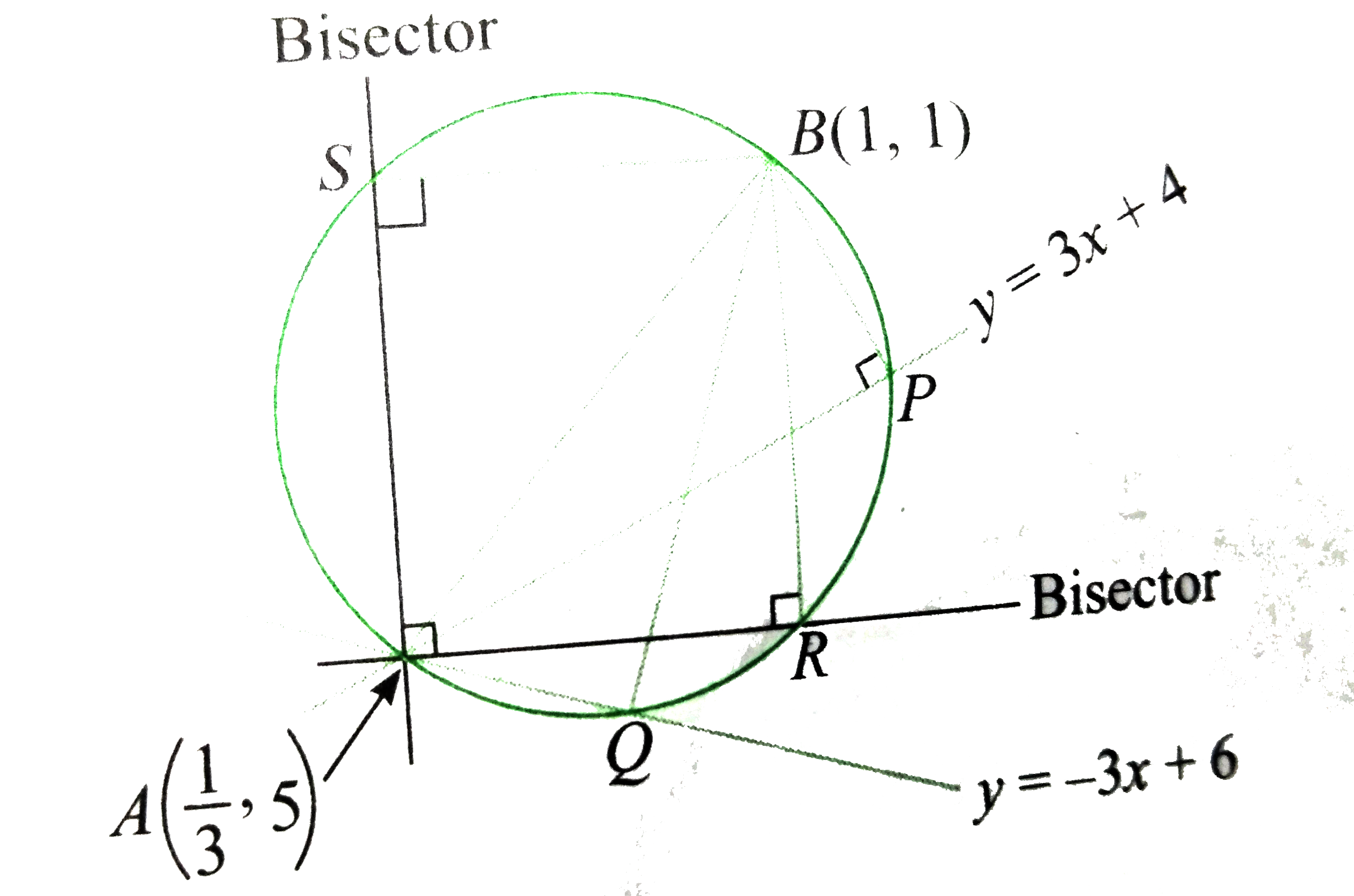Let P,Q,R and S be the feet of the perpendiculars drawn from point (1,1) upon the lines y=3x+4,y=−3x+6 and their angle bisectors respectively. Then equation of the circle whose extremities of a diameter are R and S is
 1/3,5).
1/3,5).
Angle bisectors are always perpendicular.
So, if RS is diameter, then AB is also a diameter.
∴Equation of the circle whose diameter is RS
≡ Equationof circle whose diameter is AB
≡(x−1)(x−1/3)+(y−5)(y−1)=0
≡3x2+3y2−4x−18y+16=0
Topper's Solved these Questions
- CIRCLE BOOK - CENGAGE PUBLICATIONCHAPTER - CIRCLE EXERCISE - Examples
13 Videos
- CIRCLE BOOK - CENGAGE PUBLICATIONCHAPTER - CIRCLE EXERCISE - CONCEPT APPLICATION EXERCISE 4.1
1 Videos
- BINOMIAL THEOREMBOOK - CENGAGE PUBLICATIONCHAPTER - BINOMIAL THEOREMEXERCISE - Comprehension
11 Videos
- CIRCLESBOOK - CENGAGE PUBLICATIONCHAPTER - CIRCLESEXERCISE - Comprehension Type
8 Videos
Similar Questions
Let P, Q, R, S be the feet of the perpendiculars drawn from a point (1, 1) upon the lines x+4y=12,x−4y+4=0 and their angle bisectors respectively, then equation of the circle which passes through Q, R, S is :
View SolutionFind the length of the perpendicular drawn from the point (4,5) upon the straight line 3x+4y=10
View Solution
Knowledge Check
Let P, Q, R, S be the feet of the perpendiculars drawn from a point (1, 1) upon the lines x+4y=12,x−4y+4=0 and their angle bisectors respectively, then equation of the circle which passes through Q, R, S is :
Ax2+y2−5x+3y−6=0Bx2+y2−5x−3y+6=0Cx2+y2−5x−3y−6=0DNone of theseLet P, Q, R, S be the feet of the perpendiculars drawn from a point (1, 1) upon the lines x+4y=12,x−4y+4=0 and their angle bisectors respectively, then equation of the circle which passes through Q, R, S is :
Ax2+y2−5x+3y−6=0Bx2+y2−5x−3y+6=0Cx2+y2−5x−3y−6=0DNone of theseWhat will be the length of the perpendicular drawn from the point (4, 5) upon the straight line 3x + 4y = 10?
A125B325C225D425
Let the perpendiculars from any point on the line 7x+56y=0 upon 3x+4y=0 and 5x−12y=0 be p&p', then
View SolutionObtain the co-ordinates of the feet of perpendiculars drawn from the origin upon the lines 3x−5y+2=0 and 4x−3y+5=0 and show that the equation of the st. Line joining these feet is 26x+53y=11.
View SolutionPerpendiculars are drawn from points on the line x+22=y+1−1=z3 to the plane x+y+z=3 The feet of perpendiculars lie on the line
View SolutionA perpendicular is drawn from the point P (2,4,−1) to the line x+51=y+34=z−6−9. The equation of the perpendicular from P to the given line is
View SolutionA perpendicular is drawn from the point P(2,4,-1) to the line (x+5)/1=(y+3)/4=(z-6)/-9 the equation of the perpendicular from P to the given line is
View Solution
